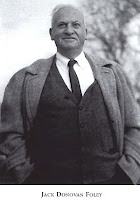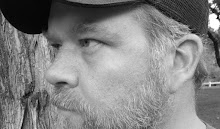
Did you know they sell stage lighting at the hardware store?
Well okay, it needs a smidge of customizing, but follow these instructions and you should have no problem taking work light, to stage light.
First, assemble your materials. You will need: One halogen worklight. I used the 500 Watt variety to provide maximum illumination, and a good range for dimming. One rectangle heating register starter collar. It can be found in the heat and air section of your local home center or at a heat and air or plumbing supply. One roll of reflective silver heat resistant duct tape. Note: you must use the reflective tape, nothing else holds, believe me I tried. And one can of flat black spray paint.
Next a couple of tools will come in handy. You may need a Phillips screwdriver for adjusting the light or replacing bulbs, a box knife for neat cuts on the metallic surface of your tape, and a heavy duty pair of tin snips for cutting the register starter collar. I have now added the idea of punching a few vent holes in your fixture to keep the heat to minimum so you might want a drill with a ¼” bit as well.
Okay on to phase one. You may have wondered why you can’t just use the light as is. You can, however, it will have a tendency to light everything and not just the stage. The collar has a 6” round opening on one end that will serve us as a “chimney” to focus our light beam a little. The rectangular end will be mated to the light itself and that is where the snips come in.
Cut the register collar at all four corners and using pliers fold and bend the box to fit your light fixture. You may also find that you need to notch the collar in one or two places depending on what kind of latches and other hardware are in the way of you getting a tight fit.
Once you have the two pieces matched up take your spray paint and give the inside of your collar a good coat. The aluminum finish on these collars reflects light and causes it to bounce to places that we don’t want it. Trust me, skip this step and you’ll come back to it later. I originally put a coat on the outside as well but this is unnecessary and increases the heat radiating from your light.
After giving the spray a few minutes to dry to the touch fit your register collar snugly onto the light. Now it’s time to fasten it on using the duct tape. You may have to experiment a little to find the best way of doing this. You want as close to a light-tight seal as you can get.
Once you have it on good, go ahead , get an extension cord, turn out the lights and try it out, you know you want to.
Mounting these was a bit of a problem but I solved it using a piece of 2x4 and attaching my light to it using a 2” wood screw drilled through the pipe base of the light. This allowed me to pivot the light right to left and the already adjustable pipe handle gave me the rest. I had the added benefit of being in a metal building with exposed I beam. It was very simple to use a carpenter’s C clamp to attach the 2x4 to the beam. I haven’t explored other possibilities but when you get yours installed send me a picture of your installation so we can share it with the world. These are not a permanent solution but will work in a pinch and only cost about $17.00 a piece if you get your lights on sale.
I set up a dimmer system plugged into a multi plugged extension cord. You can use standard dimmer switches mounted under a plywood or MDF board. Make sure you put all of your connections into a junction box mounted to the back of your dimmer switch to protect against electrical shock, fire and heat.
Make sure to add up your amps guys! To avoid blowing breakers check to see what amperage your circuits are and plug into enough different circuits to spread the load safely. Make sure not to add too many lights on a single dimmer as this will cause a great deal of heat and may blow your dimmer switch. Also tape your cords down, safety first. Now go get you some actors to bounce your light off of!
PS I did not bother with finding a way to use gels, I’m sure it could be done, if you figure it out send me a pic. Or go here to see another simple light solution that I still use to add color on my stage.
Well okay, it needs a smidge of customizing, but follow these instructions and you should have no problem taking work light, to stage light.
First, assemble your materials. You will need: One halogen worklight. I used the 500 Watt variety to provide maximum illumination, and a good range for dimming. One rectangle heating register starter collar. It can be found in the heat and air section of your local home center or at a heat and air or plumbing supply. One roll of reflective silver heat resistant duct tape. Note: you must use the reflective tape, nothing else holds, believe me I tried. And one can of flat black spray paint.
Next a couple of tools will come in handy. You may need a Phillips screwdriver for adjusting the light or replacing bulbs, a box knife for neat cuts on the metallic surface of your tape, and a heavy duty pair of tin snips for cutting the register starter collar. I have now added the idea of punching a few vent holes in your fixture to keep the heat to minimum so you might want a drill with a ¼” bit as well.
Okay on to phase one. You may have wondered why you can’t just use the light as is. You can, however, it will have a tendency to light everything and not just the stage. The collar has a 6” round opening on one end that will serve us as a “chimney” to focus our light beam a little. The rectangular end will be mated to the light itself and that is where the snips come in.
Cut the register collar at all four corners and using pliers fold and bend the box to fit your light fixture. You may also find that you need to notch the collar in one or two places depending on what kind of latches and other hardware are in the way of you getting a tight fit.
Once you have the two pieces matched up take your spray paint and give the inside of your collar a good coat. The aluminum finish on these collars reflects light and causes it to bounce to places that we don’t want it. Trust me, skip this step and you’ll come back to it later. I originally put a coat on the outside as well but this is unnecessary and increases the heat radiating from your light.
After giving the spray a few minutes to dry to the touch fit your register collar snugly onto the light. Now it’s time to fasten it on using the duct tape. You may have to experiment a little to find the best way of doing this. You want as close to a light-tight seal as you can get.
Once you have it on good, go ahead , get an extension cord, turn out the lights and try it out, you know you want to.
Mounting these was a bit of a problem but I solved it using a piece of 2x4 and attaching my light to it using a 2” wood screw drilled through the pipe base of the light. This allowed me to pivot the light right to left and the already adjustable pipe handle gave me the rest. I had the added benefit of being in a metal building with exposed I beam. It was very simple to use a carpenter’s C clamp to attach the 2x4 to the beam. I haven’t explored other possibilities but when you get yours installed send me a picture of your installation so we can share it with the world. These are not a permanent solution but will work in a pinch and only cost about $17.00 a piece if you get your lights on sale.
I set up a dimmer system plugged into a multi plugged extension cord. You can use standard dimmer switches mounted under a plywood or MDF board. Make sure you put all of your connections into a junction box mounted to the back of your dimmer switch to protect against electrical shock, fire and heat.
Make sure to add up your amps guys! To avoid blowing breakers check to see what amperage your circuits are and plug into enough different circuits to spread the load safely. Make sure not to add too many lights on a single dimmer as this will cause a great deal of heat and may blow your dimmer switch. Also tape your cords down, safety first. Now go get you some actors to bounce your light off of!
PS I did not bother with finding a way to use gels, I’m sure it could be done, if you figure it out send me a pic. Or go here to see another simple light solution that I still use to add color on my stage.







